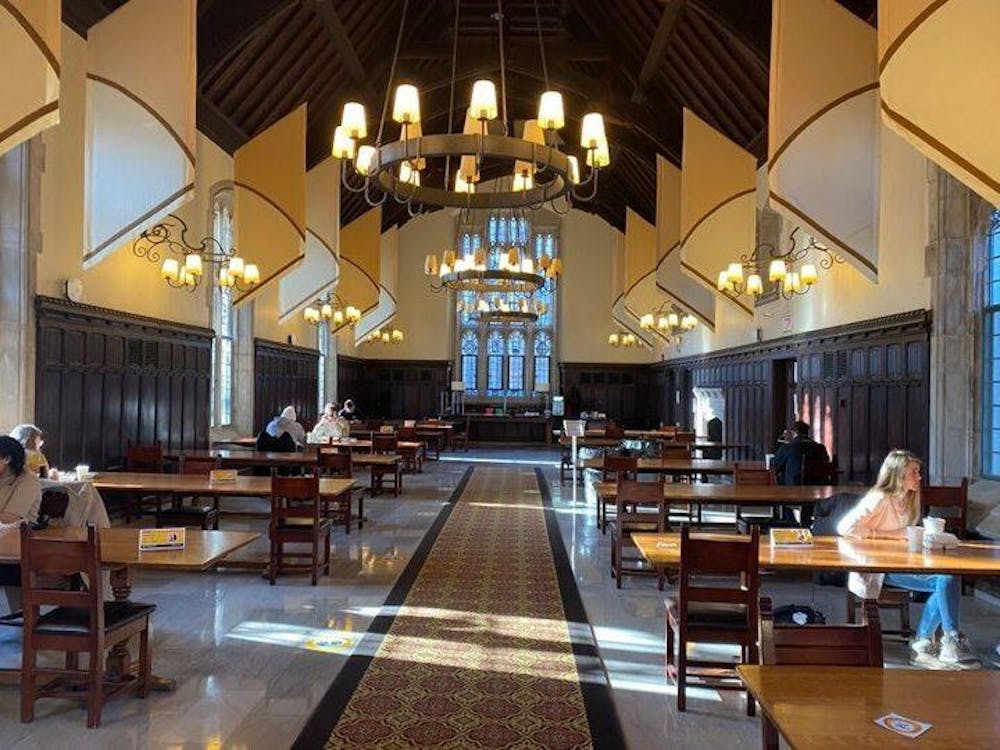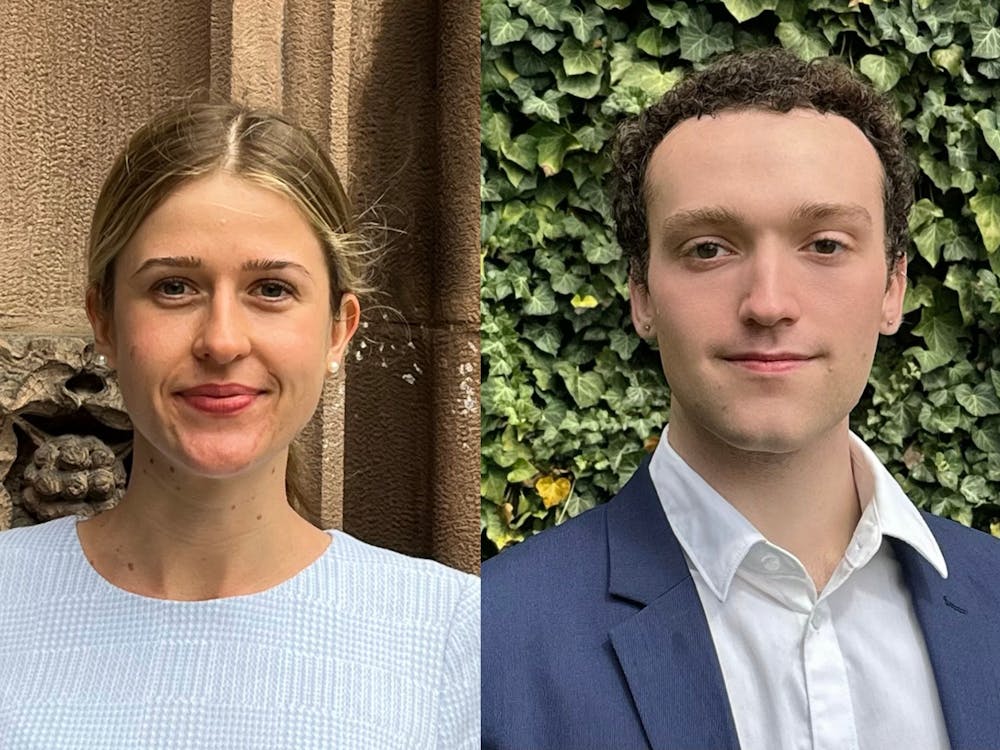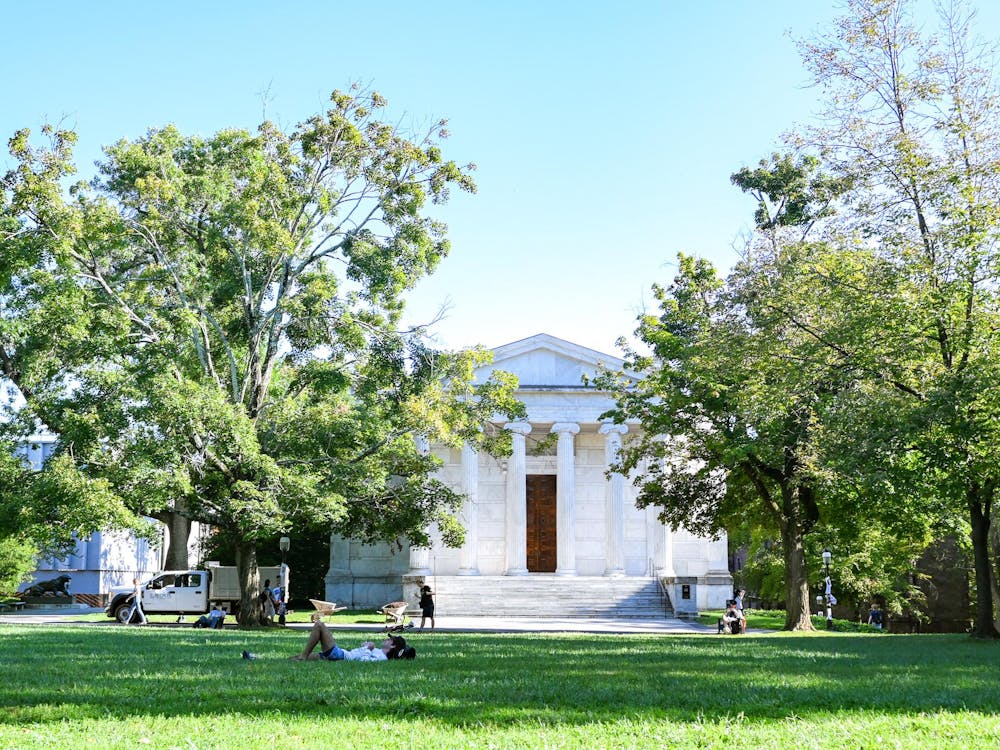When the old Dinky station collapsed last September, Charles Jacobson ’16 was on his way to an interview with the Student Volunteer Council.
Upon learning that the Dinky station had collapsed, he instantly ran to Dillon Gymnasium, where the fire squad car was parked, and went to the station to gear up and get into the truck. That day, he said, he experienced the first trench rescue assignment of his life and worked with other firefighters to make sure that no one was trapped.
This is not an unusual day for Jacobson. As volunteer firefighters, Jacobson and the other members of the Princeton Student Firefighters Association respond to many kinds of emergencies on and off-campus, ranging from burning houses to malfunctioning fire alarms.
Princeton Student Firefighters Association, founded in 2011, is dedicated to raising interest in firefighting and facilitating student engagement with the local fire department. The group is affiliated with the Pace Center for Civic Engagement and the Princeton Fire Department and currently has 11 members.
“Are you guys real?”
“When I say, ‘I’m a part of Princeton Student Firefighters Association,’ people’s first reaction is usually, ‘What?’” Robert Keown ’17 said. “There’s a bunch of questions that follow – Are you a firefighter? There’s a group of students who do that? Are you an actual firefighter, or are you a semi-firefighter?”
To all those questions, the answer would be “yes.”
Robert Gregory, the town's Director of Emergency Services, said that student volunteer firefighters are participating as full members of the fire department and that he appreciates their commitment. Full members of the fire department are required to be on call and to set aside one night each month at the station.
Student volunteers participate in the fire department just like any other community member, Dan Tomalin, chief of the Princeton Fire Department, noted.
“They come to the same training; they come to our meetings,” Tomalin explained. “They can vote [to elect officers], they go to all the calls, just like all the rest of us.”
Not only are the student firefighters full members of the fire department, but they also regularly make it into the list of top responders to emergency calls. Nicholas DeLuca GS was the top responder in January, and Jacobson added that other members also frequently appear on the top 10 list of responders.
From Burning Houses to Fire Alarms

All student firefighters are technically on call 24 hours a day, seven days a week, as are all other volunteer firefighters. Each member receives a pager, and when there is an emergency call, the pagers go off, dispersing an emergency signal. Members who decide to respond to the call then gather in front of Dillon, where the fire squad car is parked. They then turn on the siren and drive up to the station on Witherspoon Street. From there, they get into their gear and board the trucks, and they are ready to go.
DeLuca explained that although the members are on call 24/7, it does not necessarily mean that they have to respond to every call.
“I guess the biggest thing they are afraid of is the time commitment, but it’s volunteer, so you don’t haveto do anything,” said DeLuca, referring to the students. He explained that the time commitment is, in fact, quite flexible.
As members of Princeton Fire Department, the student firefighters are trained to respond to a variety of emergency situations, including fires, floods, snowstorms and different rescues.
"When the Dinky station collapsed, we were there. When people got trapped in a boat near the dam on Lake Carnegie... we went on to the rescue," Jacobson explained. “If you actually look at the ‘Prince’ photo reporting the gas leak, the firefighter who has his back to the camera, that’s Noah Brown [’13] —he’s one of the student firefighters. If you look atsome of the photos on the Dinky collapse, you’ll see me holding the ladder as Noah’s going down the ladder into the trench.”
Being a Firefighter
DeLuca explained that being a firefighter is a serious job and involves a sense of responsibility and commitment. Jacobson said that his role as a firefighter is to provide help when needed.
“When [people] call you, it’s usually their worst day; they need you," Jacobson said. "And you’re there —you’re trained to help them and make it better.”
“Bad things happen. So you have to be on your toes; you have to be ready,” Keown said, noting that the experience has taught him to be ready at any given moment. “And even though a lot of times you respond to a call that’s not the most dangerous situation, you need to be ready because if you are not careful, any situation could become dangerous pretty quickly.”
David Brown, Assistant Director of the Pace Center for Civic Engagement, said that the volunteering work allows students to be more consciously engaged with the world around them.
“We want good things to happen and people to be good citizens, and kids to get tutored and fires to be put out, but no one should just volunteer without learning about that issue,” he said. “[The Orange Bubble] is insular, for sure.”
Becoming a Firefighter
Becoming a firefighter involves several steps, Jacobson explained. Students have to go through a basic physical test and submit an application to the town council. Once the town approves the membership of an applicant, the student becomes a candidate.
After becoming candidates, students have to take Fire One, a comprehensive 150-hour training. They then become probationary members, and after some period of time, they are promoted to full members. Full members, unlike probationary members, are allowed to drive the fire squad cars and have to come to the fire station one night a month.
Some of the student firefighters have previous experiences in firefighting. Jacobson, who is from Englewood Cliffs, NJ, has been a volunteer firefighter since he was 16. He explained that he was friends with many firefighters in his hometown and became one himself because he found the experience to be meaningful.
DeLuca, who had attended the U.S. Naval Academy as an undergraduate, said it was natural for him to join the firefighting team because he received similar training in military school. He also noted that the transition was easy for him because he found the environment in the firefighting service to be similar to the environment in the military.
Other volunteers, such as Amanda Hurley GS and Keown, had no previous experience in firefighting.
“I have always been interested in and have always looked up to firefighters. I was always fascinated by them,” Hurley said, explaining why she decided to become a volunteer firefighter after seeing a few members of the Princeton Student Firefighters Association at an activities fair.
Keown said he joined the firefighting team because he wanted to get involved with the community.
“I wanted to get involved with Pace Center, and I wanted to do community service, and being a firefighter was definitely the coolest option for me,” Keown said.
Beyond Stereotypes
Keown noted that many people have stereotypes about firefighters.
“The two biggest misconceptions to being a firefighter is that you have to be big and strong and that you have to be male,” he said. “That’s just flat-out ridiculous. You don’t have to be in Division I athletic shape in order to be a firefighter.”
Keown added that being a firefighter is way more about composure and being able to keep cool in an intense situation.
“Also a lot of people think that you have to be a male. The stereotypical firefighter is a man, and that’s ridiculous,"Keown said. "One of our highest responders is [Hurley], and she’s incredible. She just totally breaks that stereotype. Women can do everything men can do, obviously.”
When asked whether she had experienced any difficulties being a female firefighter, Hurley said she has never encountered any issues with it.
“I guess being a firefighter is traditionally considered to be a male job, and women don’t tend to think about it as something they can or want to do,” Hurley said. “But for me, it was something that I did want to do, and it was totally fine. The firefighter community was so welcoming.”
Jacobson added that the most important value for a firefighter is the ability to know one’s strengths and limitations.
"You would have to be able to support your own body weight; you have to have good stamina," Jacobson said, "but it’s more about knowing yourself, because you never go into the fire by yourself. You always have a team; you are always on a crew."
Community: Bringing the University and the town together.
When it comes to his favorite part about being a firefighter, DeLuca said he enjoyed interacting with members of the department who have been firefighters for a long time. He added that they have some interesting stories to tell, which he enjoys listening to.
Keown noted that one of his favorite things about being a firefighter is the sense that he is developing “links with the town of Princeton and all these other people who are out there firefighting.”
Because it is a 100 percent volunteer fire department, student volunteers’ contributions are very significant to the fire department, Tomalin explained. He added that the University had been very cooperative in allowing them to go on campus and seek volunteers, and the students who do volunteer have been a huge help to the department.
“Few other colleges have a fire department this close and have this great relationship with the University,” DeLuca noted.
He also said he knows of at least two professors who are volunteering as firefighters and also added that many of the University personnel engage in the community as volunteer firefighters during the daytime, when most students and residents aren’t free to go on a call.
“It’s basically the University helping the town with the fire department. In the years past, it’s been tough to get the guys to respond during the day because everyone has jobs,” DeLuca explained, referring to volunteer members of the fire department. “You can’t really leave your work to fight fire. But the University’s letting these guys do it.”
Brown said he thinks the student firefighters blend together the town and University. He explained that saying the student firefighters are linking the University and the town would imply that the two are separate entities, whereas the University is part of the larger Princeton community, and the student firefighters are making the University part of the town.
Lasting Legacy
“I’ve been at the fire department for 27 years, and I know they had student volunteers back then," Tomalin said in regards to how long the University students have volunteered as firefighters. "So, it’s been a long time.”
In fact, the very history of the Princeton Fire Department dates back to 1757, when the University, then under the name of the College of New Jersey, moved to its current location. Back then, professors and students organized themselves as volunteer firefighters, and each made his individual contribution to the town.
Even after the Princeton Fire Department was established in 1778, students have continued to be engaged as volunteer firefighters for over two hundred years.
Keown described the group as “something really special” and noted thatthe group is currently seeking to expand its membership.
“Our company motto is, ‘We lead, let others follow,’" Keown said. “I think that speaks a lot about what kind of person we’re trying to attract.”
Correction: Due to an editing error, an earlier version of this article incorrectly named the Student Volunteer Council. Due to an editing error, an earlier version of this article did not properly introduceDavid Brown, Assistant Director of the Pace Center for Civic Engagement. The 'Prince' regrets the errors.








